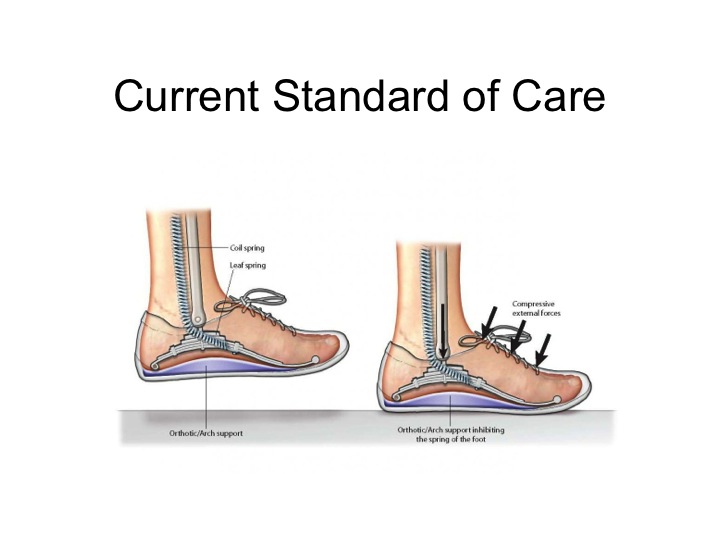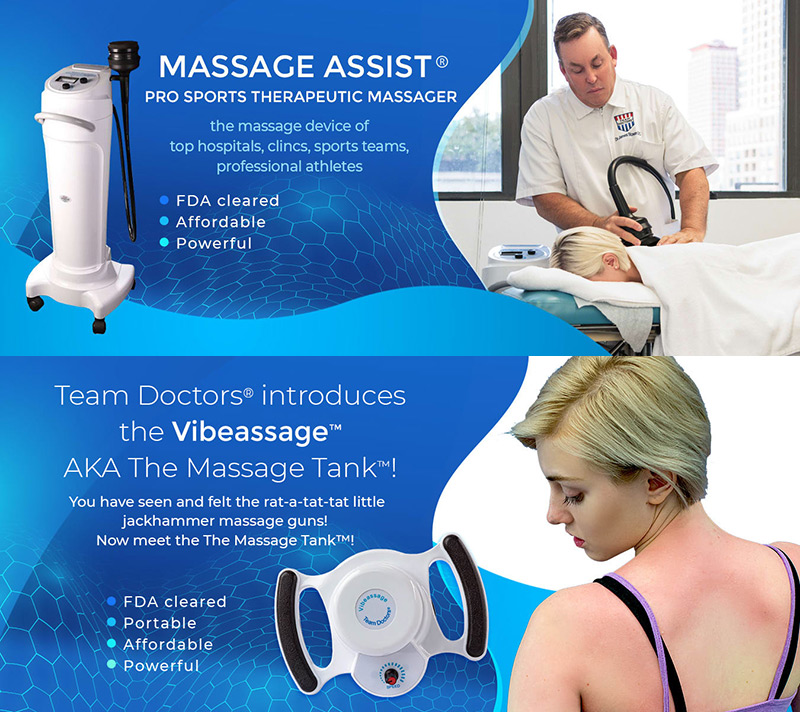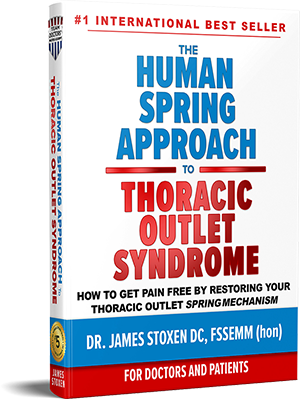My presentation is titled ‘Run For Life, Barefoot’ because the shoe industry is promoting the various different high-tech implements and the adjustments to the human foot.
The foot is perfect when we’re born and they’re making these claims that wearing their shoes will make you a better runner, it is safer and you will be able to run a for a lifetime.
They market the shoes as some sort of anti-aging device or something that will allow you to prevent injuries.
In reality 30 years ago they recommended all of these cushioning devices and now they are backtracking, backpedaling and you see these new barefoot running shoes, if there is such a thing. Promoting barefoot running and people are going back to nature.
So in reality, what is right?
As doctors we have determined that because we have advised our patients properly.
Patients should not be advised by the person that sells the shoes in the stores because they don’t have medical training to evaluate what your body needs.
The people doing research should advise patients and we must conduct more research.
We need to look at this very carefully.
This is my story I would like to add:
who’s right?
First they say use shoes with maximum cushion
Then they say use shoes with no cushion
Then they say use no shoes at all or go barefoot?
Who is right?
Why don’t we look at the shoes worn by athletes that compete in different running events
Cross country running shoes… (Talk about the design of those and why they are designed that way)
Sprinters shoes (talk about the design of those and why they are designed that way)
Running shoes for everyone else – (talk about the standard running shoe design and why they are designed that way)
Talk about barefoot shoes and why they are designed that way
Which one is right?
In 2007 I was invited to give a lecture in Japan at the world Congress of aging in Tokyo. In the audience was the director for product development for Converse Japan, Dan Weiss.
Dan came to my lecture but after the presentation he invited me to meet with executives of the converse–Japan operation at their headquarters in Tokyo.
They asked me to give them a take on the book where industry and how it relates to my approach to the human body and the human foot is a giant spring mechanism rather than the lever system. The purpose was obviously to determine if there was a better design for footwear at that time.
I remember how wide-eyed my daughter was at the time being 12 years old looking over the fancy Converse Japan footwear designs wondering if she could get a few pairs to take home. Thank God Dan was a father of a young girl and realized how important it was for my daughter to have some of those fashion conscious shoes. What makes it cool for her was that these Japanese designs and styles were not available in the United States. Subsequently she was the only one in her school with these special Japanese design Converse shoes
When I started to go into my 15 minute discussion of the human spring mechanism and the way the human foot attenuates impacts and how footwear affects the human foot, at the end of the meeting the executives asked me what kind of shoe would I recommend.
What I said shocked them.
My recommendation was to develop a shoe that was all you needed and nothing more. Low tech light weight and nothing fancy.
They looked at me in a state of shock . Of course I was shocked that they were shocked but nothing shocks me anymore about the way the footwear industry is run.
It’s a $25 billion industry where no one can agree on what looks best and what is the most healthy and frankly most companies could care less whether the footwear is healthy for you are not.
In fact when I attended the global footwear conference in Düsseldorf Germany only one footwear company from Germany actually discussed with me the health benefits of their footwear out of the hundreds of exhibits that I visited.
So yes it’s confusing to say the least of what footwear to wear. In fact each time you change footwear styles your brain has to learn a new pattern of movement. the movement pattern has to be changed and the current pattern of movement that has been stored in the brain, now that it’s comfortable.
So how do you avoid such confusion both to yourself and to your brain?
I say make the leap into barefoot running!
The reason is to develop one paranormal movement that is perfect for your foot and whatever shoe you have combined with the foot.
Your brain learns one perfect pattern of movement. If there’s pain or some sort of condition that develops by running the only thing you have to be concerned with is your form and technique. When you wear various running shoes with different implements you have to weigh too many variables to sort through adding to the confusion of what you need to do to be able to run without pain.
Is it the high heel of the shock? Is it the curve last? Is it that toe lift? Is the shoe the right size in the fore-foot? Is that heel cup strong enough to prevent over pronation?
Literally you could go through eight or 10 pairs of shoes with different attributes and styles and all 10 could be useless to help you run pain-free.
The problem isn’t your shoe. The most likely problem you has come from wearing and tearing and breaking down of the Human Spring. The most likely reason for why you cannot absorb the shock of the landing and have normal stress and strain free biomechanics is because the issue is binding and weakening your spring. The problem is the foot cannot absorb the impact of the landings.
So if you take your shoes off and work on your foot to release your human spring to be able to have a foot and intact spring then you will be able to absorb the impact without the benefit of an artificial cushion–spring mechanism and then it was strength in the spring suspension system to be able to absorb the impacts of standing, walking, jogging, running and then eventually sprinting forces.
You have to practice taking impacts by increasing the forces of impacts to allow the foot to adapt to these increasing impacts of various different angles called spring training or plyometrics then eventually you can run without having to worry about what shoes are best.
Once you learn how to barefoot run you don’t have as many other variables to be concerned about except form and technique.
This video tutorial was taken from the lecture:
Run For Life! Barefoot
Presented by Dr James Stoxen DC
The 8th Annual Malaysian Conference And Exhibition On Anti-Aging, Aesthetic And Regenerative Medicine
Kuala Lumpur, Malaysia
April 30 — May 2, 2011







